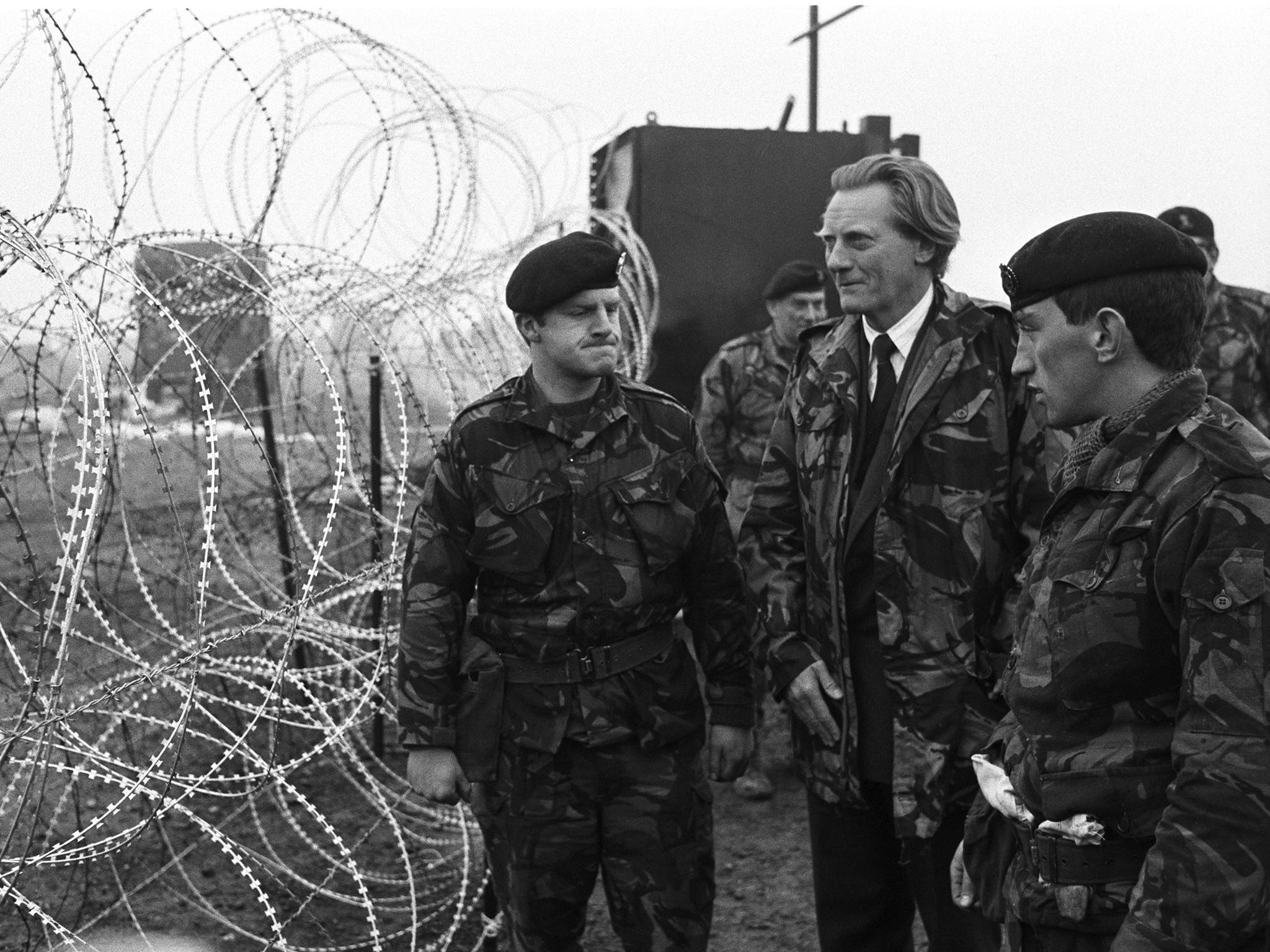National Archives: MI5 monitored peace protesters at RAF bases in the 1980s
Government papers reveal senior MI5 officer JL Jones expressed concern about CND protesters linked to an organisation called Action 84

Peace protesters demonstrating against the deployment of US nuclear missiles at British air bases in the 1980s were kept under close watch by MI5, newly released Government papers suggest.
Files released by the National Archives in Kew, west London, indicate that peace camps set up around the bases involved were monitored by the security service for evidence of infiltration by “subversive organisations”.
They include a letter from a senior MI5 officer, JL Jones, to No 10 after Downing Street raised concerns about the activities of protesters who had established two camps at RAF Molesworth in Cambridgeshire, where some of the missiles were stationed.
Writing in February 1985, Mr Jones said that the camps – known as the Rainbow Fields Village and the People's Peace Camp – were made up of “floating groups of Quakers and peace and ecology campaigners”.
“Although individual members of subversive organisations have from time to time been involved with both camps, neither owes its foundation or its continued existence to the support of any subversive group,” he wrote.
But despite that reassurance, Mr Jones warned CND members linked to an organisation known as Action 84 were pressing for the protests at Molesworth to be stepped up.
“A leading figure in this was Jimmy Johns, a former member of the (Trotskyist) Socialist Workers Party and one of the founders of ‘Action 84’, who sits on CND’s Projects Committee, which plans future campaigns,” he wrote.
“As a result of this pressure, CND has decided to make Molesworth the focus of its campaigning in 1985. The intention of CND now is to hinder any construction work at the site.”
Which countries have nuclear weapons?
Show all 14The Downing Street intervention was prompted by a warning from John Major, then the backbench MP for the nearby constituency of Huntingdon, that CND was trying to acquire a property to use as a base for its activities in the area.
Mr Jones said MI5 had no knowledge of such a plan but said the protesters had built a “crude structure” at the site which they used as a chapel.
“The campers call the chapel 'Eirene' after the Greek word for peace. The building has no roof but was dedicated (for religious services) by the Bishop of Huntingdon,” he wrote.
PA
Subscribe to Independent Premium to bookmark this article
Want to bookmark your favourite articles and stories to read or reference later? Start your Independent Premium subscription today.


Join our commenting forum
Join thought-provoking conversations, follow other Independent readers and see their replies
Comments